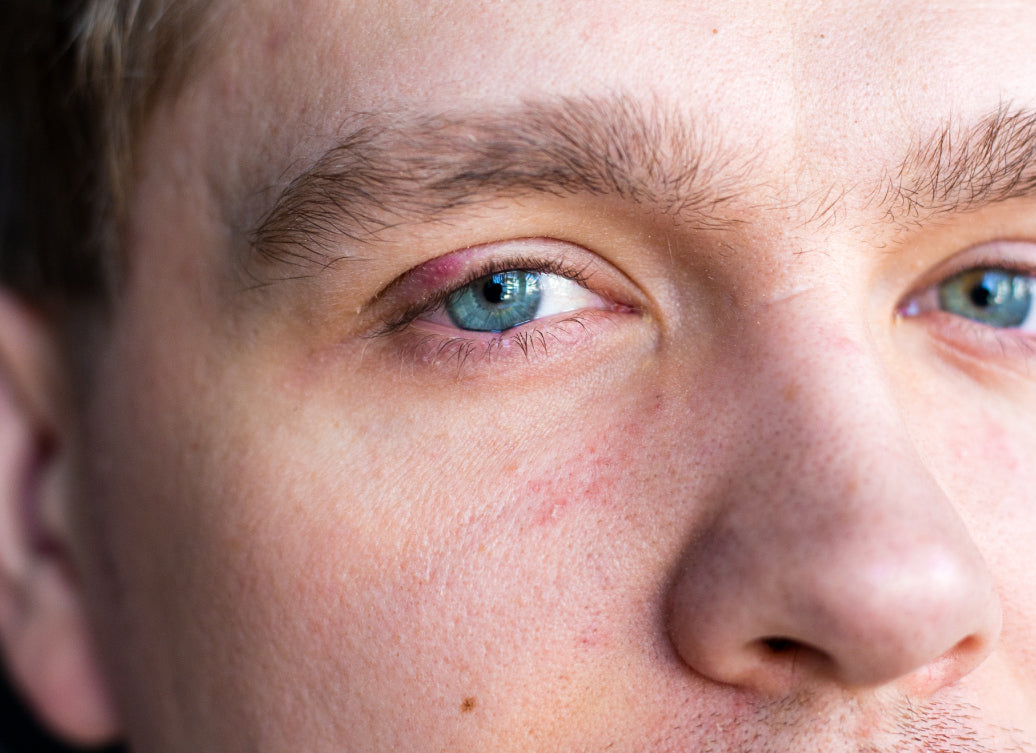Blepharitis is an uncomfortable, mild and fairly common eye condition, but does it ever affect only one eye at a time? We take a closer look at what blepharitis is, and how it happens.
What are the symptoms of blepharitis?
Blepharitis can manifest as itchy, sore, inflamed or swollen skin around the eye, and a gritty feeling in the eye. Eyes can water, look red or feel dry. Blepharitis is sometimes accompanied by crusty eyelids or eyelashes, and eyelashes can be hard to open in the morning on waking up.
What causes blepharitis?
The condition is caused by a few different culprits, but seems to involve an overgrowth of the bacteria or yeasts on the skin, or a proliferation of Demodex mites that live around the base of the eyelashes. It’s often associated with existing skin conditions such as rosacea, seborrheic dermatitis or dandruff. It’s likely that different factors (including things like weather conditions, lack of sleep, air conditioning) have to come into play before a blepharitis flare is triggered, as it’s not totally clear why some people are more prone to the condition than others.
Does it affect both eyes?
Blepharitis usually affects both eyes at the same time. It can sometimes happen that only one eye is affected, but it’s uncommon.
Although most cases of blepharitis are mild, left untreated the condition can lead to secondary problems, and it is these that can sometimes affect one eye more than the other. Secondary complications include styes, chalazions, or (in extreme cases) damage to the cornea.
How can you manage blepharitis?
The condition is usually managed by following a daily hygiene routine. This involves:
- Heat: a hot compress or eye bag is placed over the area for five minutes
- Massage: very gentle massage around the eyelashes dislodges crusts and unblocks ducts
- Cleaning: a well-diluted (scent- and soap-free) wash on a fresh cotton bud cleans the area around the eyelashes and eyelids
If your eyes are very itchy and dry, you can use Skin Salvation to keep the skin supple and soft around your eyelids. There’s strong evidence to suggest that 5% tea tree ointment can prevent mites from breeding; massage a small amount of Balmonds Tea Tree Balm into your eyelashes. You can use diluted Balmonds Natural Shampoo & Body Wash to clean the area.
As part of your daily cleansing routine, swap your foaming or scented make-up remover for an oil-based cleanser, like Balmonds Omega-Rich Cleansing Oil, which is much less likely to irritate your eyelids.
If the condition persists, doesn’t improve or gets worse after a week of this regime, consult a doctor or pharmacist; you may be prescribed antibiotic eye drops.
Recommended products:
Balmonds Skin Salvation
with hemp and beeswax
Balmonds Tea Tree Balm
balm with tea tree essential oil and beeswax
Balmonds Natural Shampoo & Body Wash
with calendula & chamomile
Balmonds Omega-Rich Cleansing Oil
with rosehip and calendula
